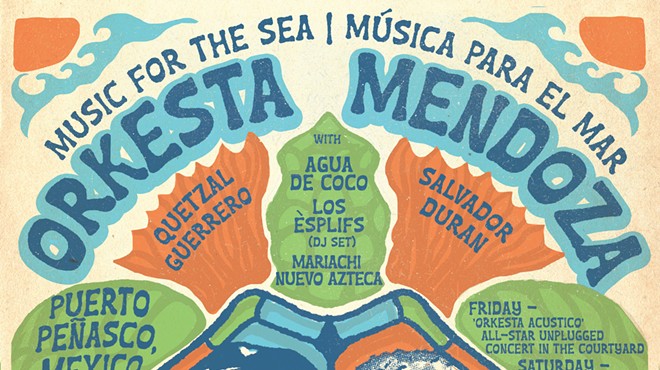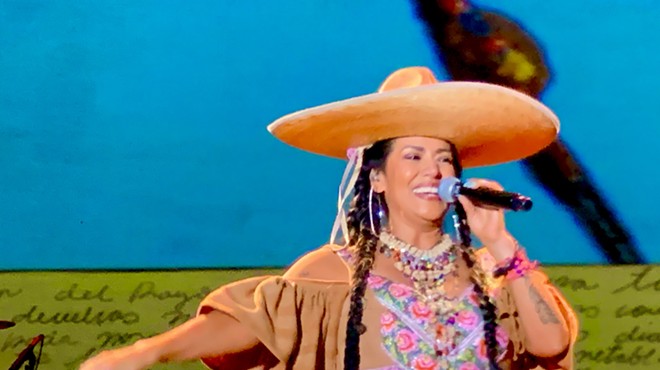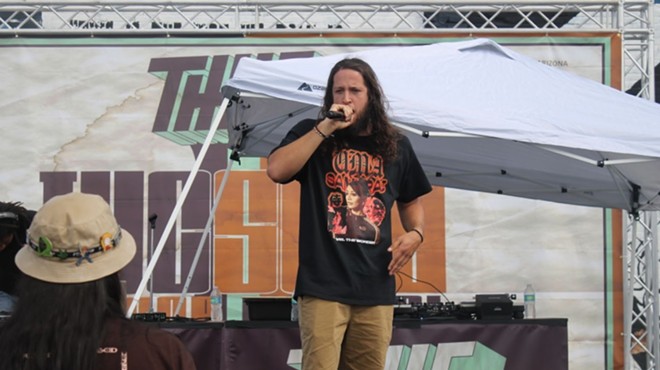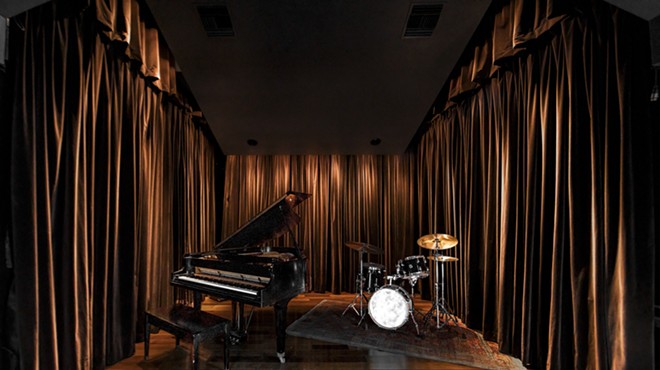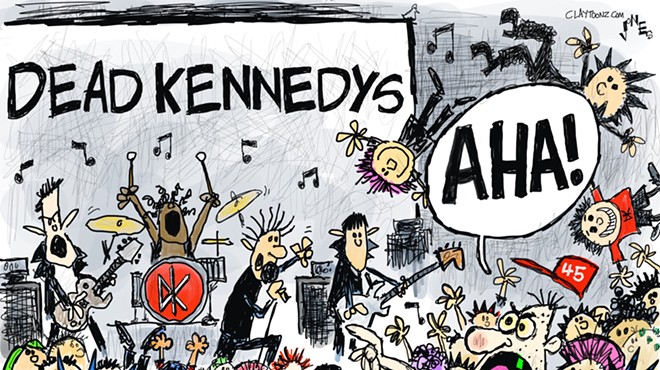Thursday, February 27, 2014
Tucson Fasola Explore the Haunting and Unfamilar

- TucsonFasola.com
Describing the sound of shape note singing can be difficult. But Paige Winslett, of Tucson Fasola, a group dedicated to the performance of songs drawn from some of the oldest musical traditions in America, gives it her best shot.
“I use words like haunting, unique, and kind of loud, kind of unfamiliar,” Winslett says. “But there’s no way to describe it. I usually suggest people come join us, because it’s not describable.”
Shape note singing has roots in England in the 18th century, but is most commonly associated with Sacred Harp singing, a form of a cappella gospel music associated with rural churches in the late 1700s. Sacred Harp features a special written notation, designating which notes will be sung as fa, sol, la, and mi. The sound of Sacred Harp is otherworldly, utterly mysterious sounding despite its often booming volume. Sacred Harp singing has been documented by sound archivists like Alan Lomax, featured in the 2003 film Cold Mountain, and has been explored on record by experimental band Danielson, songwriter Richard Buckner, Led Zeppelin bassist John Paul Jones, and others.
Tucson Fasola — founded by J.P. Thom-Gronachan in the late ‘90s — performs music Sacred Harp music every first and third Saturday at the Sonora Cohousing Common House. On Saturday, March 1 and Sunday, March 2, the group will host the annual Tucson Sacred Harp Convention. This year, the convention features the third Elder Gerald Hand Memorial Sing, celebrating the life of Gerald Hand, a Sacred Harp singer and Southwestern Baptist preacher. His grandson, Eric Morgan, an Associate Professor at New Mexico State University, travels to Tucson to teach an abbreviated singing school. His morning singing class echoes the way Sacred Harp singing spread across the United States, taught by itinerant singers as they traveled and taught rural, largely unschooled communities how to read from shape note hymnals.
“[Gerald Hand] was born in 1914 in Ranburne, Cleburne County, Alabama,” Morgan says. The Hands have roots in south Georgia, but during the Great Depression moved west in search of work.
“After a convoluted journey through California, the family ended up in west Texas and southeastern New Mexico,” Morgan says. “My grandfather was also a preacher in the Primitive Baptist church (hence the "Elder" designation), and he started three churches in southeastern New Mexico. This is where my mother and her six siblings learned the music, some of which was Sacred Harp. It is also where, years later, I learned the music.”
Though Sacred Harp singing in the Southwest remains small, Morgan says there’s a particularly strong connection between the communities that do celebrate the music.
“Two years ago, we traveled to Tucson for the convention, and my uncle (David Hand) floated the idea of having our group in Las Cruces partner with the Tucson group to co-host this convention,” Morgan says. “We were pleased when the Tucson community readily agreed. Now, Tucson will host the Elder Hand Memorial on even numbered years, and we in Las Cruces will host it on odd numbered years. The same model applies for the Rocky Mountain Convention with Albuquerque group hosting on even numbered years and the Denver/Boulder area singers hosting on odd numbered years.”
Local songwriter Al Perry says he’s attended the informal sings in Tucson, and was struck by the open nature of the communal singing.
“I went to their sings for a while, but I never could get it,” Perry says. “I got frustrated and stopped going. Sometimes if I sat next to someone who was good I could sort of limp along. I love that stuff. And I like the egalitarian nature of it. No audience; that's so great!”
Winslett says that the sings attract all types. The group declares no political or religious affiliation, and the group encourages open participation. In keeping with the music’s inclusive roots.
“I’ll only speak for myself, although I do find many of the songs moving, the crowd that attends our sings ranges from those who are in a deeply worshipful state to those who are in it strictly for the harmonies and the music,” Winslett says. “It just attracts all types…we are open to all people, and don’t want folks to feel like they have to be coming from the same Christian perspective to participate or enjoy what we offer.”
At its Sacred Harp music — with its overwhelming volume and alien magnetism — achieves the ultimate aim of social music: connection.
“I would describe the sound of shape note singing as loud, boisterous, energetic, soulful, and even transcendent,” Morgan says. “Some songs are fast, some are slow, but regardless, when singing with one another, there is a connection to others that I have not found in other forms of music.”
Tags: tucson fasola , tucson sacred harp , tucson shape note , al perry , tucson sacred harp convention , J.P. Thom-Gronachan , Eric Morgan , Gerald Hand , Paige Winslett


